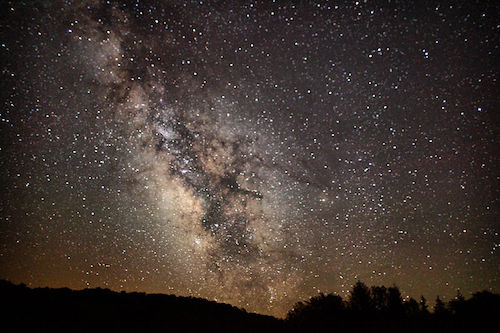 Intelligent Design
Intelligent Design
 Physics, Earth & Space
Physics, Earth & Space
Seeking Alien “Megastructures” Around a Puzzling Star, Astronomers Debate Intelligent Design

A fascinating article for The Atlantic describes a disagreement among astronomers over intelligent design. Though the phrase isn’t used, it’s clearly about design detection and when such a determination is legitimately triggered.
A star some 1480 light years from us, KIC 8462852, emits a peculiar pattern of light, alternatively obscured and revealed, obscured and revealed — “irregularly shaped, aperiodic dips in flux down to below the 20% level.”
In 2011, several citizen scientists flagged one particular star [seen by the Kepler Space Telescope] as “interesting” and “bizarre.” The star was emitting a light pattern that looked stranger than any of the others Kepler was watching.
The light pattern suggests there is a big mess of matter circling the star, in tight formation. That would be expected if the star were young. When our solar system first formed, four and a half billion years ago, a messy disk of dust and debris surrounded the sun, before gravity organized it into planets, and rings of rock and ice.
But this unusual star isn’t young. If it were young, it would be surrounded by dust that would give off extra infrared light. There doesn’t seem to be an excess of infrared light around this star.
It appears to be mature.
And yet, there is this mess of objects circling it. A mess big enough to block a substantial number of photons that would have otherwise beamed into the tube of the Kepler Space Telescope. If blind nature deposited this mess around the star, it must have done so recently. Otherwise, it would be gone by now. Gravity would have consolidated it, or it would have been sucked into the star and swallowed, after a brief fiery splash.
The problem is simple. A young star could have such a “mess” of matter circling it but a middle-ages star would not — the mess would have since been hoovered up. KIC 8462852 is not young but middle-aged, so what is that stuff? One group of scientists, led by Yale postdoc Tabetha Boyajian, sorted through a variety of natural explanations — “blind nature” — all unsatisfactory, until they settled on one they could accept:
The paper finds each explanation wanting, save for one. If another star had passed through the unusual star’s system, it could have yanked a sea of comets inward. Provided there were enough of them, the comets could have made the dimming pattern.
But that would be an extraordinary coincidence, if that happened so recently, only a few millennia before humans developed the tech to loft a telescope into space. That’s a narrow band of time, cosmically speaking.
But astronomer Jason Wright at Penn State begs to differ. Reluctantly, he’s ready to consider the hypothesis that what they’re looking at is alien technology — orbiting “megastructures” build to capture energy. As the structures circle, they block the light going out and thus create a periodic disturbance whose evidence we can perceive:
SETI researchers have long suggested that we might be able to detect distant extraterrestrial civilizations, by looking for enormous technological artifacts orbiting other stars. Wright and his co-authors say the unusual star’s light pattern is consistent with a “swarm of megastructures,” perhaps stellar-light collectors, technology designed to catch energy from the star.
“When [Boyajian] showed me the data, I was fascinated by how crazy it looked,” Wright told me. “Aliens should always be the very last hypothesis you consider, but this looked like something you would expect an alien civilization to build.”
Boyajian is now working with Wright and Andrew Siemion, the Director of the SETI Research Center at the University of California, Berkeley. The three of them are writing up a proposal. They want to point a massive radio dish at the unusual star, to see if it emits radio waves at frequencies associated with technological activity.
Wright considers the design inference a last resort: “the very last hypothesis you consider.” But not out of the question, and worth testing by a closer inspection.
SETI, the Search for Extraterrestrial Intelligence, has long sought such evidence of intelligent life elsewhere in the universe. Could this be it? I have no idea. The point to take away is that what these scientists are doing is practicing the science of intelligent design — the detection and identification of intelligence and its residues, sorting natural processes from purposeful ones, distinguishing “blind nature” from directed, goal-driven activity resulting in unmistakable artifacts.
It’s ID. Precisely that. It’s testable. And it’s science.
Image: Milky Way from Summit Lake, WV, http://www.ForestWander.com [CC BY-SA 3.0 us], via Wikimedia Commons.
